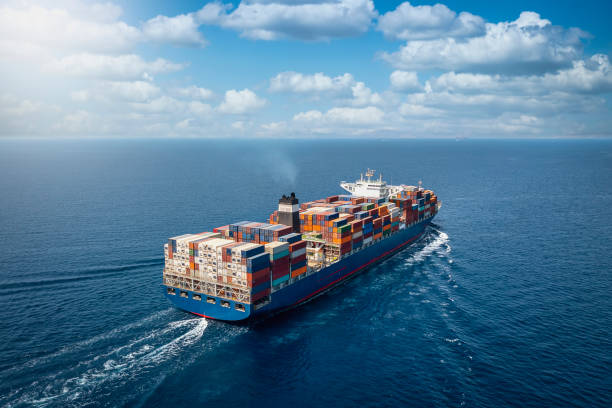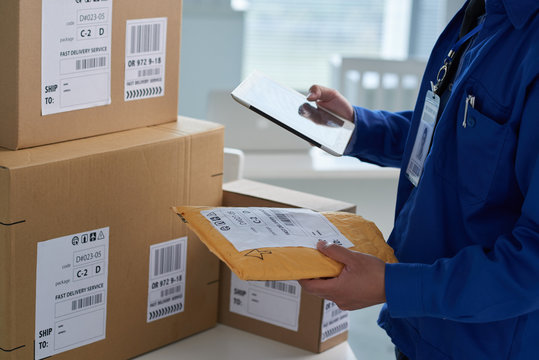Mexico is a growing market with a large and diverse population. As more and more businesses look to expand into Mexico, efficient inventory receipt and shipping processes are essential for success.
As an e-commerce professional, you know that inventory receipt and shipping is a critical part of the customer experience. When done well, it can help you to deliver products to your customers quickly and efficiently, while also minimizing costs. However, when done poorly, it can lead to delays, lost shipments, and unhappy customers.
If you are looking to master inventory receipt and shipping in Mexico, there are a few key things you need to keep in mind. First, you need to understand the Mexican customs and import regulations. These regulations can be complex, so it is important to do your research and make sure you are compliant.
Second, you need to choose the right fulfillment partners. Your fulfillment partners will be responsible for receiving your inventory, storing it, and shipping it to your customers. It is important to choose partners that have experience shipping to Mexico and that have a good track record of reliability.
Finally, you need to use the right technology. There are a number of e-commerce platforms and shipping software solutions that can help you to streamline your inventory receipt and shipping processes. By using the right technology, you can save time and money, while also improving the customer experience.
This blog post will provide a step-by-step guide to mastering inventory receipt and shipping in Mexico. We will cover everything from understanding Mexican customs and import regulations to selecting suitable fulfillment centers to streamlining the shipping process to the USA and beyond.
Step 1: Understanding Mexican Customs and Import Regulations
The first step in mastering inventory receipt and shipping in Mexico is to understand the country's customs and import regulations. This includes knowing which products are restricted or prohibited, as well as the required documentation for importing goods.
In Mexico, this is governed by the normas oficiales mexicanas or NOMs. These NOMs are technical requirements that must be met in order to legally import products into Mexico. They are considered to be technical barriers to trade or TBTs and must be carefully analyzed. To comply with the NOMs, all products that are destined for commercial sale within the country must be labeled in Spanish. If the goods are imported, labeling must take place before the items for sale enter into Mexican commercial territory. All of these NOM requirements are published in the Diario Oficial of Mexico and by relevant government agencies.
Cubbo’s International Expansion team will conduct an extensive process of analysis of exactly what NOMs apply to your specific product. We work closely with your logistics team to make a game plan for the labeling of your products. If needed, we can perform the labeling at various ports of entry into Mexico (Benito Juarez International Airport for air shipments; Veracruz or Manzanillo ports for maritime shipments; and Laredo, Texas for imports via land from the United States). At Cubbo, we strive to never have product held up in customs and careful labeling analysis is part of our success formula. In addition to the labeling and testing analysis, we also perform an analysis of tariff reduction and we also file the necessary Certificate of Origin paperwork as needed on your behalf.
Some of the key documents that you will need to import inventory into Mexico include:
- A commercial invoice
- A certificate of origin
- A packing list
- A bill of lading
Cubbo’s International Expansion team will perform the counting of the inventory upon arrival to the port of entry in Mexico. Our team then files the official pedimento with the Mexican government outlining the exact number of units of product that Cubbo is importing into Mexico.
You can find more information about Mexican customs and import regulations on the website of the Mexican Secretariat of Economy.
Key Points
- The Mexican government has strict regulations regarding the importation of goods.
- It is important to be familiar with these regulations before importing goods into Mexico.
- Failure to comply with Mexican customs and import regulations can result in fines, penalties, and even the seizure of goods.
Tips
- When importing goods into Mexico, it is always best to err on the side of caution.
- If you are unsure about whether a particular product is restricted or prohibited, it is best to consult with an attorney or customs broker.
- You can also contact the Mexican Secretariat of Economy for more information.
Of course, Cubbo’s International Expansion team can assist with all of the above.
Step 2: Partnering with Import of Record and Merchant of Record Services
If you are new to importing goods into Mexico, you may want to consider partnering with an Import of Record (IOR) or Merchant of Record (MOR) service. These services can handle the necessary import paperwork and tax obligations on your behalf, easing the burden on your business.
IORs and MORs can also help you to facilitate a seamless customs clearance process. This is important because delays at customs can lead to costly fines and penalties.
Key Points
- IORs and MORs can be a valuable resource for businesses that are new to importing goods into Mexico.
- These services can help you to navigate the complexities of Mexican customs and import regulations.
- They can also help you to avoid costly delays and penalties.
Tips
- When choosing an IOR or MOR service, it is important to do your research.
- Make sure that the service has experience working with businesses that are similar to yours.
- You should also ask about the fees that the service charges.
By working with IORs and MORs, businesses can streamline customs clearance and focus on their core operations without getting bogged down in administrative tasks. This partnership ensures a seamless flow of inventory from international suppliers to Mexican customers.
Step 3: Selecting Suitable Fulfillment Centers in Mexico
Once you have a good understanding of Mexican customs and import regulations, you need to select suitable fulfillment centers in Mexico. When making this decision, you will need to consider factors such as proximity to key markets, transit times, and storage capacity.
It is also important to choose fulfillment centers that have experience working with international businesses. This will ensure that your shipments are handled efficiently and that you receive the best possible customer service.
Key Points
- The location of your fulfillment center is important.
- You want to choose a center that is close to your target markets.
- You also need to consider the transit times from the fulfillment center to your customers.
- The storage capacity of the fulfillment center is also important.
- You need to make sure that the center has enough space to store your inventory.
Tips
- When choosing a fulfillment center, it is important to get quotes from multiple providers.
- You should also ask about the services that each provider offers.
- Some providers offer value-added services, such as kitting and assembly.
In Mexico, Cubbo’s warehouse is located near the key region of Polanco, inside the city limits of CDMX. Over 40% of e-commerce orders inside Mexico occur in the capital city region. Cubbo offers same-day fulfillment services on orders placed inside CDMX. This bring speed at a cost-effective price point to your customers.
Cubbo is also able to offer customization, kitting, business rules for your product (such as promotional flyers for first-time buyers), and much more.
Step 4: Efficient Inventory Management in Mexico
Once you have selected fulfillment centers in Mexico, you need to implement efficient inventory management practices. This includes real-time tracking of inventory levels and timely stock replenishment.
You can use inventory management software to optimize stock levels and avoid stockouts. This will help you to ensure that your customers always have the products they want, when they want them.
Key Points
- Efficient inventory management is essential for businesses that want to succeed in Mexico.
- You need to track your inventory levels in real time.
- You also need to replenish your inventory in a timely manner.
- This will help you to avoid stockouts and ensure that your customers are satisfied.
Tips
- There are a number of different inventory management software solutions available, so it is important to choose one that is right for your business. Some factors to consider include the size of your business, the complexity of your inventory, and your budget.
- Set up your inventory management system properly. Once you have chosen a software solution, you need to set it up properly. This includes entering all of your inventory data and setting up alerts so that you are notified when inventory levels are low.
- Track your inventory levels in real time. One of the most important things you can do to ensure efficient inventory management is to track your inventory levels in real time. This will help you to identify potential problems early on and take corrective action before they become a major issue.
- Replenish your inventory in a timely manner. Once you have identified that your inventory levels are low, you need to replenish your inventory in a timely manner. This will help you to avoid stockouts and ensure that your customers are satisfied.
Cubbo’s market leading platform provides all of these functionalities and more. Your International Expansion team member will work with your dedicated domestic Key Account Manager to onboard you to the Cubbo platform and educate your team on how to make the most out of our market-leading technology. We will show you how to integrate with your existing sales channels, schedule inventory replenishments, see the status of your pending orders, file disputes with carriers, and much more.
Step 5: Secure and Compliant Packaging for Shipping
When shipping goods to Mexico, it is important to use secure and compliant packaging. This will help to safeguard your products during transit and ensure that they arrive in good condition.
The Mexican government has strict regulations regarding the packaging of goods for export. You will need to make sure that your packaging meets these requirements.
Key Points
- The packaging of your goods is important.
- You need to make sure that your packaging is secure and compliant.
- This will help to ensure that your products arrive in good condition.
Tips
- When packaging your goods, you need to consider the following factors:
- The size and weight of your goods
- The fragility of your goods
- The length of the transit time
- You should also use packaging materials that are sturdy and resistant to damage.
- You should also label your packages clearly with the contents and destination.
Step 6: Streamlined Shipping Process to USA and Beyond
Once your products are packaged and ready to ship, you need to choose a shipping carrier that can provide a streamlined shipping process. When making this decision, you will need to consider factors such as transit times, cost, and reliability.
It is also important to choose a shipping carrier that has experience shipping to Mexico. This will help to ensure that your shipments arrive on time and in good condition.
Key Points
- The shipping carrier you choose is important.
- You need to choose a carrier that has experience shipping to Mexico.
- This will help to ensure that your shipments arrive on time and in good condition.
Tips
- When choosing a shipping carrier, you need to consider the following factors:
- The transit times offered by the carrier
- The cost of shipping
- The reliability of the carrier
- You should also get quotes from multiple carriers before making a decision.
Cubbo’s International Expansion team can assist in this process if needed.
Conclusion
Mastering inventory receipt and shipping in Mexico is essential for businesses that want to succeed in this growing market. By following the steps outlined in this blog post, you can ensure that your inventory is handled efficiently and that your customers receive the best possible service.
Reiterate the benefits of leveraging Import of Record and Merchant of Record services for a smooth fulfillment experience.
By partnering with an IOR or MOR service, you can outsource the complexities of importing goods into Mexico to experts in the field. This will free up your time and resources so that you can focus on growing your business.
In addition, IORs and MORs can help you to navigate the intricacies of Mexican customs and import regulations. This will help you to avoid costly delays and penalties, ensuring that your shipments arrive on time and in good condition.
The International Expansion team at Cubbo has a comprehensive IOR and MOR solution for leading global direct-to-consumer (DTC) e-commerce brands looking to enter Mexico
Our team is ready to use our experience and expertise to make entering Mexico a success.
We offer a high-quality service throughout the entire process, from a detailed analysis of the duties and specific regulatory requirements that apply to your product, to the coordination of the nationalization of your product and the collection of appropriate taxes and other items when your product is sold.

.png)




.png)

